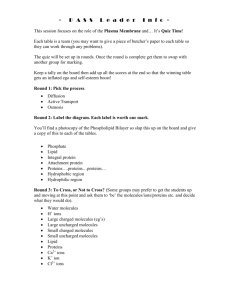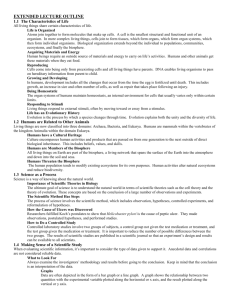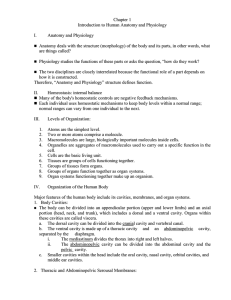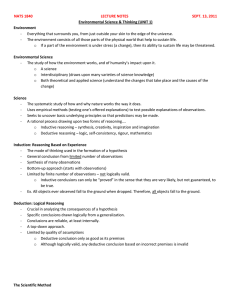CELL BIOLOGY REVIEW SHEET
advertisement
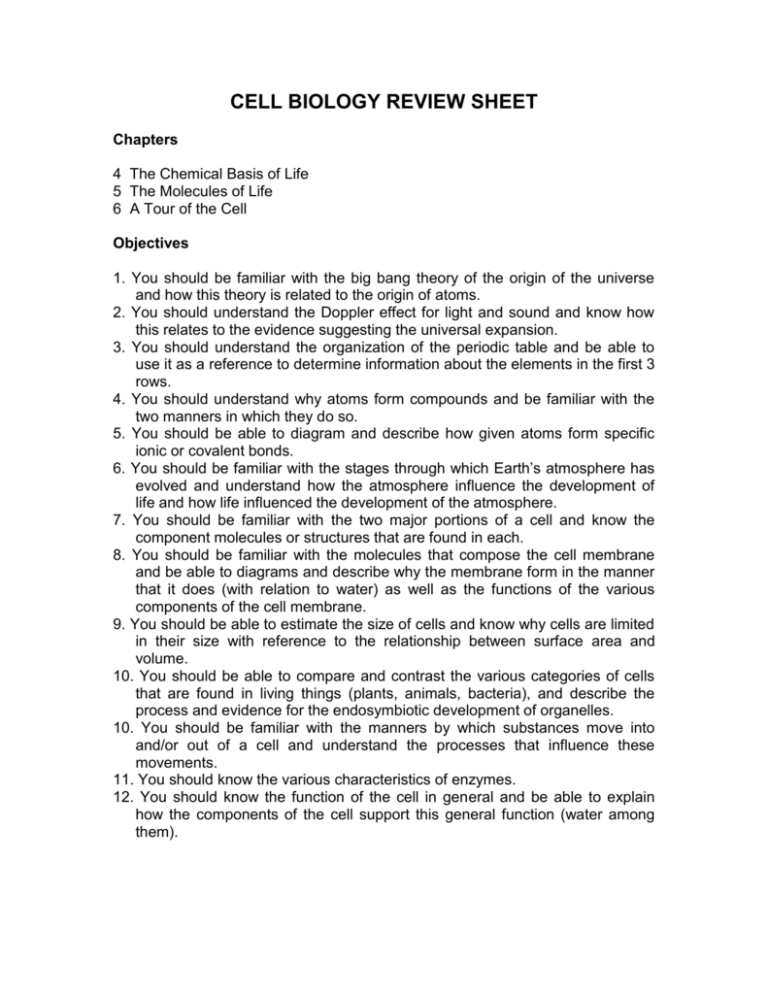
CELL BIOLOGY REVIEW SHEET Chapters 4 The Chemical Basis of Life 5 The Molecules of Life 6 A Tour of the Cell Objectives 1. You should be familiar with the big bang theory of the origin of the universe and how this theory is related to the origin of atoms. 2. You should understand the Doppler effect for light and sound and know how this relates to the evidence suggesting the universal expansion. 3. You should understand the organization of the periodic table and be able to use it as a reference to determine information about the elements in the first 3 rows. 4. You should understand why atoms form compounds and be familiar with the two manners in which they do so. 5. You should be able to diagram and describe how given atoms form specific ionic or covalent bonds. 6. You should be familiar with the stages through which Earth’s atmosphere has evolved and understand how the atmosphere influence the development of life and how life influenced the development of the atmosphere. 7. You should be familiar with the two major portions of a cell and know the component molecules or structures that are found in each. 8. You should be familiar with the molecules that compose the cell membrane and be able to diagrams and describe why the membrane form in the manner that it does (with relation to water) as well as the functions of the various components of the cell membrane. 9. You should be able to estimate the size of cells and know why cells are limited in their size with reference to the relationship between surface area and volume. 10. You should be able to compare and contrast the various categories of cells that are found in living things (plants, animals, bacteria), and describe the process and evidence for the endosymbiotic development of organelles. 10. You should be familiar with the manners by which substances move into and/or out of a cell and understand the processes that influence these movements. 11. You should know the various characteristics of enzymes. 12. You should know the function of the cell in general and be able to explain how the components of the cell support this general function (water among them). Vocabulary big bang doppler effect protons electron orbits electric stability covalent bonding hydrogen Stanley Miller nitrogen gas self-limiting endosymbiosis hydrophilic membrane proteins receptor proteins volume cell wall cytomembrane sys. ribosomes diffusion endocytosis chemical gradient polar products hubble quarks neutrons atomic number structural stability hydrogen bonding hydrogen sulfide organic molecules ozone ozone formation cell membrane hydrophobic transport proteins cytoskeletal protein diffusion rate chloroplasts endoplasmic retic. prokaryote osmosis exocytosis enzymes cohesion galaxies red shift atoms subatomic particles atomic nucleus electrons atomic mass period table compounds ionic bonding methane ammonia water vapor reducing atmosphere inorganic molecules neutral atmosphere carbon dioxide photodissociation oxygen gas oxidizing atmosphere cell cytoplasm phospholipids water bilayer adhesion proteins recognition proteins ion surface area micrometers microscope central vacuole mitochondria golgi apparatus vacuoles eukaryote organelles passive transport active transport hypertonic hypotonic induced fit model chemical reactions solvent reactants




